Published on March 27, 2017
By Thomas Van Hare
Montana Senator Burton K. Wheeler, a well-known Democratic Party isolationist, was shocked by what the US Army Air Corps officer, a Captain by rank, pushed across the table into his hands. It was a small package, wrapped in light brown paper, and emblazoned with the title, “Victory Program”. He ripped it open and quickly skimmed the contents. These were the top secret war plans of the United States of America, containing the grand strategic outline for defeating Germany, Italy, and Japan.
It included production estimates, commitments in men and materiel, the shipping needed to support the deployment of men to England and the invasion of Europe, the number of air bases to be built in England, and even the strategy of the air war, detailing how strategic bombing would defeat Hitler’s Germany. Incredibly, the plan also included the rough location of where the US would invade continental Europe — the beaches along Normandy’s coast.
When he offered a copy of the “Victory Program” to the Senator, the Air Corps Captain explained that personally he was against America’s involvement in the war. Like Charles Lindbergh, he supported the America First movement, as did the plan’s main author, Major Albert C. Wedemeyer, US Army, a West Point graduate of 1919 who in 1941 lead the War Plans Division of the War Department. The officer wanted him to make use of the plan on Capitol Hill to help avert a potential war with Germany, Italy, and Japan.
The Senator, an anti-war activist, recognized at once the political value of what he had before him. To secure reelection for a third term in the previous year’s campaign, President Franklin D. Roosevelt had lied and hidden his war plans from the American people. The “Victory Program” was proof of it. While falsely claiming to be an advocate of peace and neutrality, the Senator realized that President Roosevelt had secretly ordered the preparation of a war plan that would take America chin deep into conflict within the year.
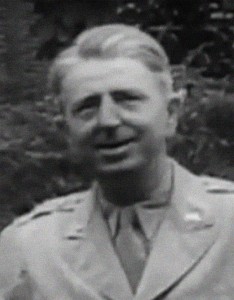
The Senator wasted no time. Even if President Roosevelt was a fellow Democrat, he broke ranks. He moved quickly to undercut Roosevelt by calling on Chesly Manly, the Chicago Daily Tribune’s Washington correspondent and another anti-war activist. Together, they went through the plan in person. They copied out the key sections and published the details in a major and lengthy article in the Chicago Daily Tribune, much to the embarrassment of the White House. The article played to America’s anti-war sentiment — in late 1941, 80% of Americans opposed entering the war.

Predictably, the majority of neutrality-minded Americans were outraged. Hearings were scheduled in the Congress and Senate. It seemed that Roosevelt had found himself facing a political crisis — exactly as the Montana Senator wanted. What rescued Roosevelt’s reputation from double-dealing and possible impeachment, however, wasn’t fancy political maneuvering or a cover-up. Rather, Roosevelt’s Presidency was saved by the Japanese.
By unlikely coincidence, the Chicago Daily Tribune had published the “Victory Program” on Thursday, December 4, 1941. The front page, top of the page headline blared provocatively, “F.D.R.’s War Plans!” The article spared no available column and went on for nearly three pages in the paper, offering provocative information and details of what was in the plan — even quoting the document directly with the actual numbers of troops and overall strategic outlook.
The next day, on Friday, the House and Senate were alive with debate and outrage on the issue. Papers highlighting key aspects of the war plan were held up to emphasize the points made. Numerous speeches condemned the President. Passages were quoted, including the plan’s demand to mobilize 10 million men in uniform. Then the weekend came and the debate was put on pause. That Sunday, on December 7, 1941, the Japanese bombed Pearl Harbor. On Monday, America declared war on Japan. On Thursday, December 11, Germany and Italy declared war on America, and America responded in kind. With that, World War II had begun.
Amidst the shock of the events of Pearl Harbor, it seemed that everyone forgot about the Chicago Daily Tribune’s publication of the “Victory Program” — everyone that is, except Adolph Hitler.

Treason of the Highest Order
As one might imagine, the unauthorized leak of America’s top secret war plan had far-reaching consequences. The Senator’s decision to give the press the “Victory Program” and their decision to publish it did not keep America out of the war. As a political maneuver, the leak was a complete failure. While the debates on Capitol Hill reflected Friday’s public outrage, and while numerous other newspapers picked up the story and repeated the key points of the plan, the entry of America into World War II ended the debate.
Watching closely were Hitler’s emissaries in Washington, DC. Quickly, one of Germany’s key diplomats, the Chargé d’Affaires, Hans Thomsen, cabled Berlin with the details of what had been learned. It wasn’t long before they uncovered virtually all of the information in the top secret plan. In turn, Adolph Hitler was briefed in detail. Recognizing the threat, he ordered an immediate change in Germany’s military deployments.
Hitler demanded that extensive defenses be constructed along the beaches of Northern France. He ordered German industry to begin preparing weapons for the air defense of the Third Reich. He ordered additional anti-aircraft units be set up around German cities and key industries. He called for an increase in production and deployments of U-Boats for the Atlantic War, hoping to strangle England and eliminate America’s ability to turn England into an “island aircraft carrier”. He even advised his generals battling on the Eastern Front to change their strategy and take fewer risks, so that forces could be preserved for the battle on the Western Front — though he reversed that order soon thereafter.
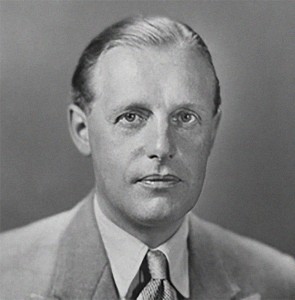
When America declared war on Japan, it seems reasonable — though we’ll never know for sure — that Hitler weighed the full meaning of America’s “Victory Program” as a measure of the nation’s intent in his decision to proceed to declare yet another war — this time against the United States. Indeed, if war was inevitable anyway, why delay and risk the political damage that might result from betraying agreements with Japan, another Axis country? Thus, not only had the leaking of the plan failed to keep America out of the war, instead it almost certainly helped bring America into the conflict and transform the war into a truly global one — a “world war”.
The Benefits of Strategic Knowledge
Undoubtedly, the untimely leaking of the top secret “Victory Program” caused the deaths of many more Americans. Apprised with the strategic overview of America’s grand war strategy, the Germans would fight the entire war in Europe with the task only of verifying that America had continued to stick to its strategic plan — as drafted and leaked — and indeed it did. With every move, the “Victory Program” held true.
Indeed, much of the thinking in the “Victory Program” was enlightened and timely. That America had such a visionary approach to warfare came as a shock to the Germans — this alone is strong evidence of the extraordinary vision Major Widemeyer had in preparing the work. As it happened, the effort that had gone into preparing the plan was too great, and the time to change it was not available either. Further, to change it would have likely only reduced America’s chances of victory, since no alternatives were found to be superior.
For instance, the ground forces plan that Major Wedemeyer proposed involved the integration of air power in the planning, such that the German army would be pinned in place and denied logistical support while more maneuverable US forces could take advantage of enemy weakness. In looking back, we should remind ourselves that many of the armies of that era were training for an expected repeat of the trench warfare that had been seen in World War I.
Production and manpower alone wouldn’t do the trick — tactics and effective strategic organization were essential. To make his point, Major Wedemeyer stressed that, “Another million men in Flanders would not have turned the tide of battle for France.” Rather, he pointed out, had the French been better organized and integrated, as well as better commanded, the Germans would have had potentially failed in the conquest of France. In explaining the plan and the necessity of planning for the full logistical implementation of the war effort to a critic in the War Department, Major Widemeyer wrote, “It would be unwise to assume that we can defeat Germany by simply outproducing her. One hundred thousand airplanes would be of little value to us if these airplanes could not be used because of lack of trained personnel, lack of operating airdromes in the theater, and lack of shipping to maintain the air squadrons in the theater.”
In fact, Major Wedemeyer’s work was so broad and effective, that America never wavered from the overarching strategic vision laid out in his plan, despite numerous opportunities to do so. Why not invade in Southern France, by Marseilles? Why not focus the build up of air power along North Africa’s coast? Why not land forces along the fine beaches of northern Denmark and drive south, isolating the German armies in France from lines of supply and communications? Why not organize the army in a different manner? None of these options were taken because Major Wedemeyer’s “Victory Program”, despite being publicly leaked and compromised, continued ahead as the master plan for the entire war, though as events unfolded, the plan was continuously updated in its detailed components.
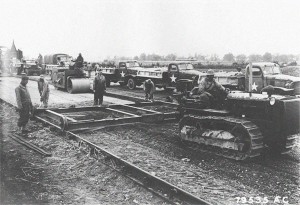
Indeed, the Germans watched in awe as the seemingly impossible task of building over 100 airbases in England was completed. By early 1943, many squadrons of bombers and fighters were moving in and the air campaign commenced. In battle against the “Victory Program”, the Germans threw their daytime and night fighter air forces into the defense of the heartland. They watched as mass conscription was instituted in America — not only reaching the target number of 10,000,000 soldiers, but even going to more than 16,000,000 men in uniform.
Likewise, the Germans prepared for and fought back against military invasions in Africa and Italy, exactly as described in the “Victory Program”. They tried but ultimately could do nothing to stop the expansion of supply routes and the Lend Lease Program to support Russia and England. They documented massive shipbuilding programs — in the form of Liberty Ships — and saw how vast numbers of men were encamped and quantities of materiel were stockpiled in England for the invasion, exactly as written in the plan. In the face of overwhelming air power, exactly as described in the “Victory Program”, Germany steadily saw its air superiority eroded and then ultimately lost to America’s fleets of fighters and bombers.
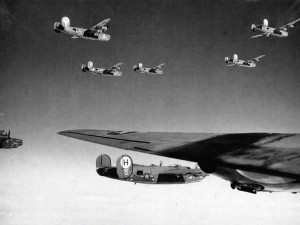
Multiple contracts for the construction of America’s four-engine bombers were issued, including for the B-17 Flying Fortress and B-24 Liberator. Again, Germany was powerless to stop America’s vast industrial might from building what became a “bomber an hour”. Auto industry factories in Detroit were pressed into service to launch the fleet of airplanes necessary to bring Germany to its knees — and the key figure who helped convert the auto factories to aviation plants was none other than one of the leaders of the America First pacifist movement, Charles Lindbergh.
In short order, the US War Department issued multiple contracts for new fighter planes to help attain air superiority over Europe — new designs were rushed into production, improving rapidly, even month to month, as modification after modification was made to enhance already competitive designs to the point where nothing in the Nazi arsenal could match the planes’ performance.
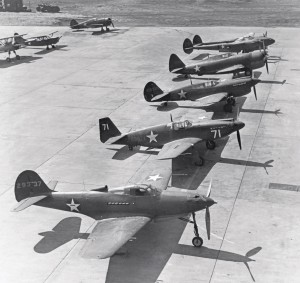
They prepared defenses on the beaches of Normandy to counter the Allied invasion force. That too took place exactly as written in the “Victory Program”, though behind schedule by a year from the date described in the plan — July 1943 — when the build up of Allied forces in England fell behind schedule. While the “Victory Program” had laid bare America’s expectation that the Russians would collapse by the end of 1942, that too hadn’t materialized, leaving Hitler furious with his generals and leaving his forces facing a two front war which could not be won.
Throughout, with the leaked “Victory Program” in hand, the Germans could focus their strategic response with relative confidence. Of course, despite all the countering moves the Germans put in place, ultimately nothing could save Germany from the overwhelming forces brought together by the Allies — particularly in terms of air power. Here, the “Victory Program” had spelled out the goals and strategies in detail — German cities and industrial centers would be bombed, massive waves of wing after wing of bombers and fighters would devastate German production capacity and terrorize the populace — and yet Germany was helpless to do anything but fight to an inevitable loss on a grand scale.
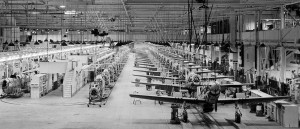
In the end, despite having the strategic knowledge of the “Victory Program” at hand, Germany stood no chance. The extraordinary industrial and manpower might of the USA was simply too much. Coupled with the Russians advancing on the Eastern Front, with American support and equipment, and then with the invasion of France in June 1944, Germany was bound for defeat.
Aftermath
As for what happened to the unknown US Army Air Corps Captain who released the plan, a study of history reveals that he escaped responsibility for his action. His identity was never revealed. That it was an Air Corps Captain who had leaked the war plan was disclosed after the war by Senator Wheeler. Afterwards, no effort was made to track down his identity and prosecute him. Most likely, the unknown Captain continued in his staff job, probably was promoted (perhaps even ending the war as with the rank of a Colonel, given the normal rapid promotion processes in wartime that favored prewar officers). Perhaps he continued to help crafting additional war plans and strategies. Most likely, he support the very war that he was so against before it started. Likewise, the Senator showed no remorse about his own role in leaking America’s top secret war plan to the press — despite that his identity was well-known, he escaped all responsibility.
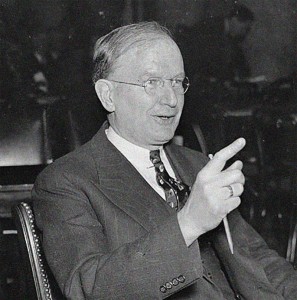
In the end, both men got away with high treason — and the costs were measured in the losses of additional American lives. For the press, the publication of the “Victory Program” was deemed “the greatest scoop in history” — in actuality, it turned out to be most damaging leak in American history. In comparison, Wikileaks might be vast, but it is far less damaging.
As for Major Albert Wedemeyer, US Army, he was celebrated as the planning architect of the US war strategy for winning World War II. There seems little doubt that he was not behind the leak — a dedicated patriot, he had invested everything in the “Victory Plan” and knew that America’s survival as a nation depended on it. Due to his extraordinary accomplishments, he was promoted steadily in active duty. He then was sent to serve in China, ultimately commanding all US forces in the country.
In the lead up to the Korean War, he was once again called to action to plan for a potential war — his plan was so good that when it failed, it was widely assumed that the enemy, like it had with the “Victory Program”, had somehow attained a copy of it. Albert Widemeyer continued to serve in the Army until he reached the rank of Lieutenant General. On his retirement in 1954, he was given his fourth star. Late in life, in 1985, he was honored by President Ronald Reagan with the award of the Presidential Medal of Freedom.
President Reagan spoke just these words, “As one of America’s most distinguished soldiers and patriots, Albert C. Wedemeyer has earned the gratitude of his country and the admiration of his countrymen. In the face of crisis and controversy, his integrity and his opposition to totalitarianism remained unshakeable. For his resolute defense of liberty and his abiding sense of personal honor, Albert C. Wedemeyer has earned the thanks and the deep affection of all who struggle for the cause of human freedom.”

Great story, and one that I didn’t know.